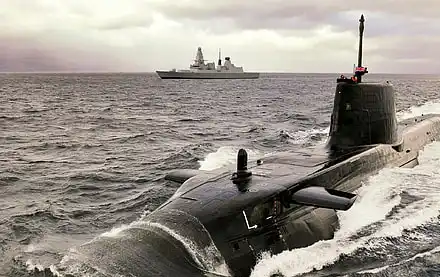




Cesare
China’s much-anticipated J-35A stealth aircraft has emerged as the centrepiece of the Zhuhai Air Show, showcasing over a decade of developmental efforts. Despite its long gestation period, military experts and analysts contend that not much information about the aircraft’s operational capabilities has been made public.
The Shenyang J-35, developed by Shenyang Aircraft Corporation (SAC), consists of a series of twin-engine, all-weather stealth multirole combat aircraft designed to excel in both air superiority and surface strike roles. The J-35 reportedly comes in two primary variants: a land-based model tailored for the People's Liberation Army Air Force (PLAAF) and a carrier-based variant optimised for catapult-assisted take-off and landing (CATOBAR) operations, intended for deployment by the People's Liberation Army Naval Air Force (PLANAF).
This latest aircraft is built on the foundation of the FC-31 Gyrfalcon, a prototype designed to demonstrate stealth capabilities and attract potential export customers, particularly after SAC did not secure the J-XX program contract with its competitor, the Chengdu Aircraft Industry Group. Throughout its development, the FC-31 has been referred to by various names in media reports, including J-31, F-60, J-21, Snowy Owl, and Falcon Hawk. It’s crucial to note that the early versions of the aircraft did not carry the J-XX designation, as such names are reserved for programs funded and launched by the military itself. Instead, the FC-31 was developed as a privately funded initiative by SAC, with its maiden flight occurring on October 31, 2012.
Significant attention from the People's Liberation Army, especially the PLA Navy, has propelled further development of the FC-31 prototype, leading to enhancements such as a catapult launch bar and folding wings. The optimised variant made its inaugural flight on October 29, 2021. In 2023, the land-based version was officially revealed, now designated as the J-35A, shortly before the 2024 China International Aviation & Aerospace Exhibition. This introduction marks a significant milestone as the J-35 becomes China’s second fifth-generation fighter aircraft, following the Chengdu J-20, establishing China as the only nation apart from the United States to operate two different types of stealth fighter jets.
The J-35A is set to make its public debut during a display event scheduled for Tuesday, coinciding with the recent 75th-anniversary celebrations of the PLAAF. This display will not only highlight the aircraft's capabilities but also emphasise its role in advancing China’s aerial combat technology. The carrier variant of the J-35 is specifically tailored for deployment on China’s aircraft carriers, reflecting a robust commitment to enhancing naval aviation capabilities.
Despite its long-awaited arrival, significant questions remain regarding the J-35's overall performance, stealth features, and operational efficacy. Analysts point out that both J-35 variants are notably smaller than China’s other stealth aircraft, such as the land-based J-20 fighter, of which approximately 200 units are currently operational with the PLAAF.
Historically, China has faced challenges in developing high-performance turbofan jet engines, often relying on Russian technology for earlier models of its domestic fighters. However, the J-31 model utilised domestically designed WS-13 engines, and analysts suggest that the J-35A could be equipped with the more advanced WS-19 engine, which may offer around 10% more power than its predecessors. This advancement in engine technology is vitally important for modern combat aircraft, as improved engine efficiency translates to extended operational range, increased payload capacities, and enhanced speeds.
Foreign military attaches, and security analysts are closely monitoring the evolution of the J-35 variants due to their strategic significance for China’s aircraft carrier program. Although China's three aircraft carriers are still in the stages of training and development and have not yet engaged in long-range operations beyond East Asia, successful deployment of the J-35 variants is anticipated to play a pivotal role in the PLA Navy’s capacity to project military power beyond Chinese territorial waters in the forthcoming years.
Design
The Shenyang J-35 development program traces its origins to the Shenyang FC-31 project, which was initiated as an export-oriented demonstrator primarily funded by private investors. Throughout its development, the program underwent numerous revisions to address the varying demands and requirements posed by multiple stakeholders, including significant input and support from the Chinese military. This dynamic environment necessitated the concurrent development of two primary variants: the navalized J-35, designed for carrier-based operations, and the land-based J-35A, tailored for operations from airfields on land. Each variant is optimised for distinct missions, both of which are essential for the People’s Liberation Army Air Force (PLAAF) and the People’s Liberation Army Navy (PLAN).
The development cycle of the FC-31/J-35 has resulted in four notable variants: the initial flying prototype, identified as FC-31 V1; the subsequent flying prototype, referred to as FC-31 V2; and the two operational variants representing the land-based and carrier-based J-35 fighters. Each of these variants incorporates unique features and improvements based on testing data and operational feedback.
The Shenyang FC-31 is categorised as a medium-sized multirole stealth fighter aircraft. It is notably smaller than the Chengdu J-20 and is strategically designed to complement the J-20 with a more economical and operationally simplified fighter option. The design and engineering of this twinjet aircraft exhibit a conventional aerodynamic configuration that includes a blended fuselage for enhanced stealth capabilities. Its structural features comprise a streamlined nose section, forward-swept intake ramp for improved airflow, diverters supersonic inlet (DSI) bumps to further optimise supersonic performance, and trapezoidal wings equipped with leading and trailing-edge flaps for improved lift and manoeuvrability. Additionally, the aircraft incorporates all-moving tailplanes and two canted swept-back vertical stabilisers. However, the prototype features triangular stabilisers, and the naval variant utilises full-length rudders for enhanced stability during carrier operations.
The cockpit of the FC-31 prototype is equipped with a two-piece canopy; however, subsequent iterations, including the second prototype, adopted a single-piece bubble canopy that enhances visibility. The J-35 variants utilise a more advanced clamshell-type canopy, which provides additional operational advantages.
In terms of landing gear, the FC-31 prototype features a twin-wheel nose landing gear design that facilitates its naval adaptation as a carrier-based fighter. This design was retained in the naval variant of the Shenyang J-35, which is further enhanced with a catapult launch bar to support operations from aircraft carriers. The naval variant also incorporates strategically placed handholds inside the cockpit for pilot safety in turbulent conditions, as well as wing folding mechanisms and a recovery tailhook to optimise carrier operations. In contrast, the land-based Shenyang J-35A variant has been designed with a single-wheel configuration in its nose landing gear. Additionally, it features a reduced wing area and distinct vertical stabilisers, which contribute to its specific ground-based operational requirements. While each variant is crafted for different missions and roles, the shared design platform fosters improved interoperability and cross-service joint operations, as emphasised by AVIC.
The Shenyang FC-31 showcases advanced low-observable design principles with a focus on minimising radar cross-section (RCS). To achieve these stealth characteristics, the aircraft employs carefully aligned control surfaces and conceals engine blades within serpentine inlets (S-ducts) positioned behind the diverter’s supersonic inlets. This configuration effectively obscures the reflective surfaces of the engines from radar detection. The overall airframe is meticulously designed with sawtooth edges, and its internal weapons bay, compartment doors, and embedded antennas are coated with radar-absorbent materials that are both integrated into the structure and applied externally to enhance stealth. The initial prototypes featured simple round engine nozzles; however, advancements in engineering led to the redesign of these nozzles in later models with serrated edges to further reduce radar and infrared signatures. AVIC asserts that the aircraft exhibits robust stealth capabilities against L-band and Ku-band radars and maintains a low-observable profile against a variety of multi-spectrum sensors. The Shenyang J-35 retains the FC-31's design, preserving its smooth surface and low-observable characteristics while also incorporating a radar reflector known as a Luneburg lens strategically placed underneath the aircraft to mask its radar signatures.
Both the Shenyang FC-31 and the Shenyang J-35 are equipped with an active electronically scanned array (AESA) radar system that also features a distributed aperture system (DAS). This sophisticated radar functionality serves as both an optical early-warning system and provides infrared search and track (IRST) capabilities for improved situational awareness. The radar system advertised for the FC-31 prototype is the KLJ-7A model developed by the Nanjing Research Institute of Electronics Technology (NRIET), which reportedly possesses performance metrics comparable to those of the AN/APG-81 radar. Additionally, the aircraft is fitted with an electro-optical targeting system (EOTS) turret mounted beneath the chin, which further enhances its targeting and reconnaissance capabilities.
The cockpit of the aircraft is equipped with advanced avionics features, including a sidestick controller, a conventional heads-up display, and a large multi-function touchscreen display (MFD) that measures 20 inches by 8 inches (510 mm by 200 mm), providing pilots with extensive situational data. Furthermore, the pilot is provided with a helmet-mounted display and sight (HMD/S) system, comparable to the Striker system developed by BAE Systems. The flight control system of the aircraft is fully digitalised and features triple redundancy modules, ensuring high reliability and operational safety, along with two independent data buses to facilitate communication between systems. The aircraft is designed to function as an essential node within a comprehensive network of various operational elements, enhancing its effectiveness in modern air combat scenarios.
In terms of propulsion, the FC-31's initial prototypes and later iterations of the Shenyang J-35 utilise distinct engine options. The earliest prototype was equipped with Klimov RD-93 engines, which were found to be inefficient, resulting in emissions characterised by black exhaust. The Aviation Industry Corporation of China (AVIC) prioritised the development of more efficient indigenous engine alternatives to address these issues. Consequently, the second FC-31 prototype was fitted with the domestically produced Guizhou WS-13E engine, an advanced variant of the Guizhou WS-13 engine that was previously used in the JF-17. This engine can deliver a maximum thrust of 87.2 kN (19,600 lbs; 8,890 kgf), significantly enhancing the aircraft's performance and operational capabilities.
Thoughts
Regional competitors, including India and Japan, are actively pursuing the development of advanced fighter jet programs in response to China's expanding military capabilities. India is engaged in the development of the HAL AMCA (Advanced Medium Combat Aircraft), while Japan is focused on the Mitsubishi F-X, both of which aim to establish or sustain air superiority in the region. Additionally, several of China’s neighbouring countries are contemplating the acquisition of advanced fighter jets, such as the F-35 from Lockheed Martin and the Russian Su-57, to enhance their respective defence capabilities and address regional security concerns.
Experts in military aviation have observed notable similarities between China’s FC-31, a fifth-generation stealth fighter, and the American F-35. These similarities encompass dimensions, operational roles, and wing-tail configurations. In a Senate hearing conducted in 2013, U.S. Defense Acquisitions Chief Frank Kendall indicated that compromised data from the F-35 program had facilitated foreign rivals in accelerating their fifth-generation fighter development efforts. Furthermore, a 2015 article in The Diplomat by Franz-Stefan Gady reported that documents leaked to Der Spiegel confirmed the theft of critical data from the Joint Strike Fighter program by Chinese cyber operatives, underscoring significant concerns related to intellectual property theft in the realm of military aviation.
Nevertheless, the claim that the FC-31 is a direct copy of the F-35 has been met with scepticism from several analysts. In 2014, David Bignell, in an article for Air Power Australia, suggested that the FC-31 was more closely modelled after the F-22, which is recognised as a U.S. air superiority fighter. Furthermore, in 2012, Vladimir Barkovsky of the Russian Aircraft Corporation MiG contended that while the FC-31 incorporates certain features from the F-35, its overall design should be characterised as "not a copy but a well-executed indigenous design," reflecting China's capabilities in independent military aircraft development.
Publications such as The War Zone and Popular Mechanics have highlighted the limitations of drawing comparisons between the F-35 and the J-35 (the naval variant of the FC-31). They emphasised that the two aircraft exhibit fundamental differences in design structure, internal subsystems, and operational requirements. Rick Joe, writing for The Diplomat, proposed that the observed similarities might arise more from a natural convergence in the design philosophies of fifth-generation fighters rather than from instances of cyber espionage. He asserted that a comprehensive forensic analysis of both aircraft designs would be necessary to ascertain whether the J-35 benefitted from any form of espionage.
Potential Operators
Pakistan
- In January 2024, the Government of Pakistan officially announced its intention to procure the FC-31 aircraft, marking a significant enhancement of its air force capabilities. Reports dated August 3, 2024, indicate that pilots from the Pakistan Air Force are currently undergoing training on the FC-31 stealth fighter in China. This development implies that Pakistan may be inclined to acquire the more advanced J-35 variant, thereby further augmenting its technological and operational capabilities.
Egypt
- In 2024, Egyptian authorities engaged in negotiations with China regarding a potential acquisition of FC-31 fighter aircraft. This initiative aligns with Egypt’s broader efforts to modernise its military and reflects the growing defence cooperation between Egypt and China. The procurement of FC-31s would significantly enhance the operational performance of the Egyptian Air Force in regional engagements and diversify its existing fleet capabilities.